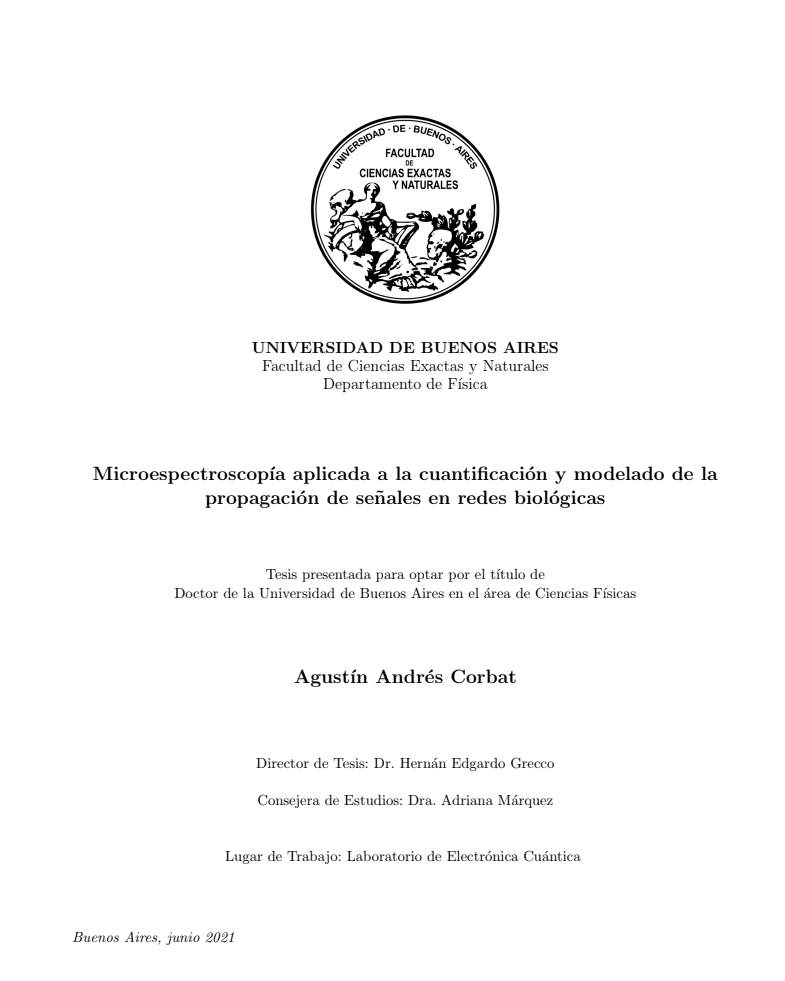Microspectroscopy applied to quantification and modelling of signal propagation in biological networks
- Category: PhD Thesis
- University: Universidad de Buenos Aires
- Year: 2021
- URL: PDF; LaTeX repository; YouTube Video
This is my PhD Thesis.
You can download the PDF file from here, access the repository here or watch the YouTube video here. I used anisotropy microscopy to quantify the state of the ensemble of homo-FRET based biosensor and estimate the enzymatic activity of three different caspases in single cells. Maximum activity times were obtained from enzymatic activity timelapses from each caspase and later used to refine a single apoptotic cascade ODE model that reproduces these times for different stimuli (extrinsic and intrinsic), as well as previous experiments by other groups.
Abstract
Biological signalling networks are composed of complex and interconnected modules capable of producing a plethora of responses to different stimuli. Due to their intrinsic variability, it is necessary to simultaneously multiplex several nodes to understand their dynamics and interaction. Throughout this thesis we chose to study the apoptotic cascade as a model system of this kind of networks. Apoptosis is a programmed cell death mechanism crucial in multicellular organisms, whose disfunction may result in cancer, amongst other pathologies. Considering its high onset variability, order of hours, while activation time between nodes is better conserved, order of minutes, it is necessary to use correlative and time resolved techniques. Aiming to gain better understanding of such network, an ordinary differential equations based model was implemented to describe its behaviour against extracellular ligands as well as intracellular stress. Biosensors were modified to better control for their perturbation introduced to the system. Finally, the synergy between experiments, data analysis and modelling that made possible the design, in a constructive manner, of a single integrative model capable of predicting our own and others experimental results could be extrapolated to other networks.



